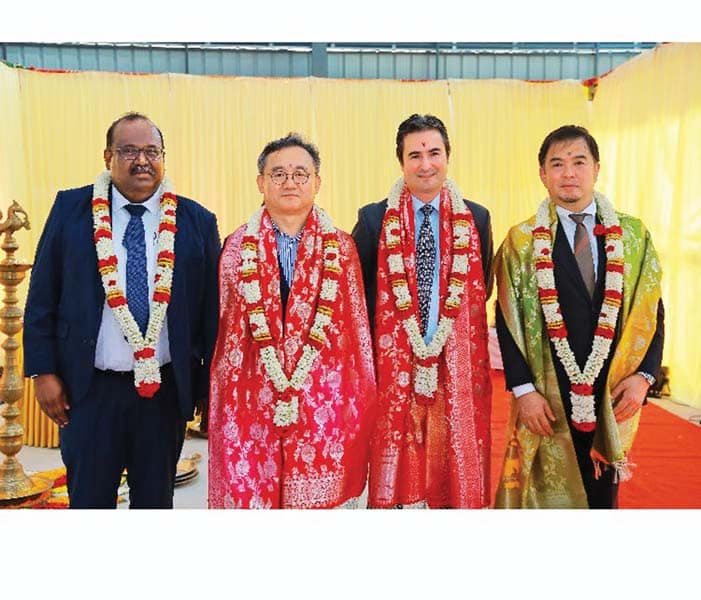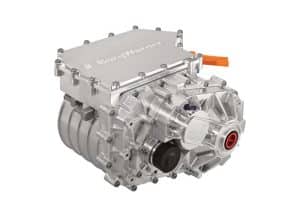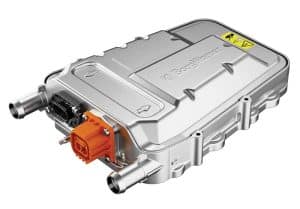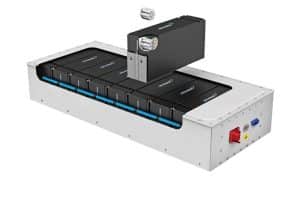BorgWarner is taking a holistic approach to emobility. Ashish Bhatia checks on the latest in creating a pull for its offerings.
The recent BorgWarner developments are centred around emobility. These are fast-paced developments. From inaugurating new plants to bagging new orders to new acquisitions to the delivery of critical components, the company has also worked on building a robust infrastructure. In India, the company inaugurated a new plant in Thiruvallur District near Chennai. Most recently, the company at its sites celebrated the production of ten lakh Inverters at the Suzhou facility and the 1.35 crore Viper power switches at the Singapore facility. It also won the contract for the delivery of battery systems for electric commercial vehicle systems. The company secured the contract for two additional high-voltage coolant heater technology wins. The company also acquired Rhombus Energy Solutions. It then went on to build the supporting infrastructure for fast-charging stations in Italy. Such comprehensive and wide ranging efforts meant the company instilled confidence in its customers. It secure the second Integrated Drive Module Award with the Hyundai Motor Company, for example.
Capacity addition
BorgWarner inaugurated a new plant in the Thiruvallur district near Chennai, India in September 2022. The added capacity with a total expanse of 83,600 sq. ft. brings in manufacturing and assembling capabilities with additional warehouse space to cater to the order book. Planned to be near its existing facility, the new plant is expected to help increase production efficiency and further strengthen the company’s dominance in the region. “The current expansion was necessary. We needed the extra space to meet our increasing customer demand in India as a major local manufacturer,” said Pei Wang, Vice President and General Manager of Asia, BorgWarner Morse Systems . He explained that the need to have two plants in the same vicinity stemmed from the need to optimise logistics and improve the supply chain. At the new facility, the focus is on the assembly of BorgWarner’s high-performance engine control and Variable Camshaft Timing (VCT) systems. The latter is claimed to optimise efficiency and contribute to emission reductions in the ICE range of vehicles. This is in line with the larger vision of contributing to sustainable mobility. The plant besides catering to the demand from India will also be a hub for the entire Asian market. It is a step in the direction of enhancing localised sourcing and a high-degree, localised manufacturing setup crucial to building a competitive edge in the Indian market.
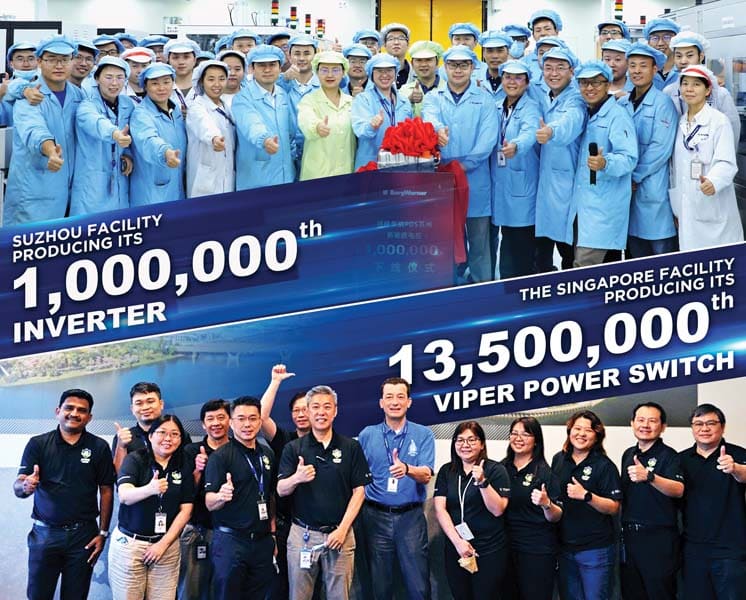 Production milestones
Production milestones
It’s raining milestones at BorgWarner across two production facilities. The Suzhou facility produced its 10,00,000th inverter. The Singapore facility produced its 13,500,000th Viper power switch. These milestones are deemed to have underscored BorgWarner’s strong capabilities in innovation and production in line with the ‘Charging Forward’ strategy aimed at driving the trend of electrification in the global automotive industry. “We are proud of these milestones that our facilities have achieved. This emphasises the superior performance and premium quality that our e-drive products deliver and showcases our employees’ teamwork and professionalism,” stated Dr Stefan Demmerle, President and General Manager, BorgWarner PowerDrive Systems. “Moving forward, we will continue to invest in innovation and development for new high-value product technologies, optimal production processes, and satisfied customers,” he mentioned. The Singapore facility began producing small batches of the first-generation Viper power switches in 2014. The Suzhou facility has produced more than 1 million inverters since September 2017 when it rolled off its line the very first inverter. A testimony to realising economies of scale. The success is known to have instilled the confidence to launch the Suzhou Plant Phase II and expand the inverter production capacity. This capacity enhancement makes the facility BorgWarner’s second-largest Viper production site around the globe (the Singapore site being the largest).
The inverters are said to be unique given their application of silicon carbide power switch to an 800V platform using the patented Viper dual-sided cooling technology. The enhanced cooling as a result aids the power switch in the reducing the use of silicon carbide materials. The company claims, it has helped deliver improved performance and system efficiency compared to conventional silicon-based inverters. The focus is on developing inverter products featuring higher performance, reliability, and scalability with a strong value proposition.
New advancements and orders
The iDM146 integrated Drive Module (iDM) got selected by Hyundai Motor Company (HMC) to power an additional A-segment EV platform. The production is scheduled to commence in the third quarter of 2024 (Q3-2024). As per Dr Stefan Demmerle, President and General Manager, BorgWarner PowerDrive Systems, the new business is a result of the advanced iDM technology. It makes use of an Interior Permanent Magnet (IPM) electric motor of 146mm stator outer diameter equipped with High Voltage Hairpin (HVH) technology claimed to offer a high power density and efficiency. Suited to 400V systems, it is claimed to churn out a peak power output of 135kW, with the modular design making it possible to tweak power and torque output for custom requirements. Besides the technology, the order win can also be attributed to its prior iDM win with HMC on another A-segment electric vehicle besides a long-standing relationship shared by the two companies. “Our partnership with the Hyundai Motor Company spans two decades, and we’re delighted to continue our relationship by supplying our latest technology for the company’s newest electrification project,” said Dr Demmerle. “Our iDM proved an ideal fit for the electric propulsion system during our first EV collaboration, and we look forward to contributing industry-leading electrification solutions to assist the company in meeting its future sustainability goals,” he elaborated.
The company also bagged business with a global auto maker and one Chinese auto maker for its advanced High-Voltage Coolant Heater (HVCH) technology. The 800V HVCH is said to complement the existing 400V coolant heater. It features enhanced electronics and is claimed to be a reliable design. “We are honoured to supply our innovative heater technology to these two major auto makers, further supporting our commitment to meeting the latest clean mobility trends,” averred Joe Fadool, President and General Manager, BorgWarner Emissions, Thermal and Turbo Systems. The extensive range of advanced battery and cabin heater systems is deemed critical to improving the battery-operated range as it is claimed to keep the battery temperature at an optimal level thereby offering an ideal interior climate for passenger comfort. In addition, they allow comfortable cabin temperatures to be generated in a short amount of time enabling a better driving and passenger experience. The coolant heaters feature a compact modular design with reduced packaging size and weight.
By offering consistent temperature distribution inside the battery pack and its cells, these heaters can be used for improving battery energy performance in EVs and HEVs. With high thermal power density and a fast response time due to their low thermal mass, these heaters also extend pure electric driving range as they use less power from the battery. In the HVCH, the latest Thick Film Element (TFE) technology is known to have been used. It is to deliver a high degree of flexibility in terms of the dimension and size of the heating elements. Developed to meet the demand for high-performance systems vulnerable to heating up, the HVCH heating elements are immersed in coolant to aid an efficient heat transfer. These are suited to applications with supply voltages between 250 and 800 volts, with a power range of three to 10 kW. The new EV models equipped with the 800V and 400V HVCH can be expected to go into production by the end of 2023 and early 2024, respectively.
In another significant development, BorgWarner showcased its commercial vehicle electrification portfolio at IAA Transportation 2022 in Hanover, Germany. Dr Paul Farrell, Executive Vice President and Chief Strategy Officer, and Harry Husted, Chief Technology Officer drew attention to the ‘Charging Forward’ business strategy with the electric Commercial Vehicle (e-CV) innovations. The new lineup signifies the streamlining electrification of commercial vehicles. At BorgWarner, it encompasses electric propulsion including battery systems, electric motors, integrated drive modules, power electronics, and thermal management solutions. The company also showcased the high-energy flat battery system said to feature what the company refers to as a novel flat module architecture. With a less than 120 mm height, it can adapt to the underbody architectures of electrified Light Commercial Vehicles (LCVs) and buses. A new modular high-voltage e-Fan system can be combined with both existing cooling fans or new customised fan designs in order to achieve the highest level of efficiency and the lowest noise output. The heavy-duty electric motor works in combination with an inverter is to provide a continuous output of 40kW between 550V and 850V to cool components such as the fuel cell, traction motor, electric brake, or the battery pack in battery-electric or fuel-cell commercial vehicles as per company claims. It is specifically designed to offer reliable long-term operation in extreme conditions. Medium- and Heavy-Duty Trucks (MDT) and off-highway applications are claimed to already have been made available to customers. Others are being subjected to customisations.
A stronger ecosystem
BorgWarner acquired Rhombus Energy Solutions of San Diego, California. The new acquisition gives the company access to Vehicle-to-Grid (V2G) and Underwriters Laboratory-certified charging. The latter is known to supply the patented technology to EV OEMs, including Proterra, and charging and grid service providers. Notably, the estimated enterprise value of up to USD 185 million in this transaction is said to have been funded primarily with cash balances. While USD 130 million was delivered at closing, USD 55 million could be paid in the form of contingent payments over a three-year time span. “The technology that Rhombus brings expands BorgWarner’s electric vehicle portfolio in North America and complements our existing European charging business. This transaction supports our Charging Forward strategy and strengthens our electric vehicle positioning as we look to power the entire propulsion system from the grid to wheels,” states Frédéric Lissalde, President and CEO of BorgWarner. “As a supplier to the automotive and commercial vehicle markets, we are not only delivering innovative technology for electric drivetrains, but we are also focused on supporting certain key elements of the infrastructure for electric mobility, including charging,” he emphasised.
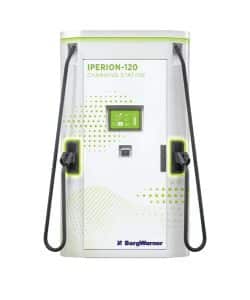 The company has installed the first units of a new fast-charging station. The Iperion-120 is known to have been installed by the Italian service provider Route220. The DC device is claimed to benefit both users and operators alike with its fast-charge options, and ease of use. It is claimed to be compatible, versatile and offer longevity. “We are very pleased to see our fast-charging solution in operation,” said Davide Girelli, Vice President and General Manager, BorgWarner Morse Systems. The DC fast-charger, Iperion-120, is equipped for various applications to meet the different demands of charging station operators, transport companies, and other utilities. It is capable of charging one car very quickly at 120 kW or charging two vehicles in parallel at a peak power of 60 kW each with high efficiency levels and optimal load management. It boasts of an output voltage up to 900V and can charge 800V BEVs. It can also double up for power requirements of next generation of batteries. Compliant with standard European charging protocols it brings in standardisation on different types of vehicles and plug configurations. The company assures an average life span of 10-years on the charging station with withstanding capabilities of temperatures between (-) 30-50-degrees Celsius and up to 4,000 m altitude. It also offers a low TCO.
The company has installed the first units of a new fast-charging station. The Iperion-120 is known to have been installed by the Italian service provider Route220. The DC device is claimed to benefit both users and operators alike with its fast-charge options, and ease of use. It is claimed to be compatible, versatile and offer longevity. “We are very pleased to see our fast-charging solution in operation,” said Davide Girelli, Vice President and General Manager, BorgWarner Morse Systems. The DC fast-charger, Iperion-120, is equipped for various applications to meet the different demands of charging station operators, transport companies, and other utilities. It is capable of charging one car very quickly at 120 kW or charging two vehicles in parallel at a peak power of 60 kW each with high efficiency levels and optimal load management. It boasts of an output voltage up to 900V and can charge 800V BEVs. It can also double up for power requirements of next generation of batteries. Compliant with standard European charging protocols it brings in standardisation on different types of vehicles and plug configurations. The company assures an average life span of 10-years on the charging station with withstanding capabilities of temperatures between (-) 30-50-degrees Celsius and up to 4,000 m altitude. It also offers a low TCO.
Also read, Changes in leadership at ZF Group in India




